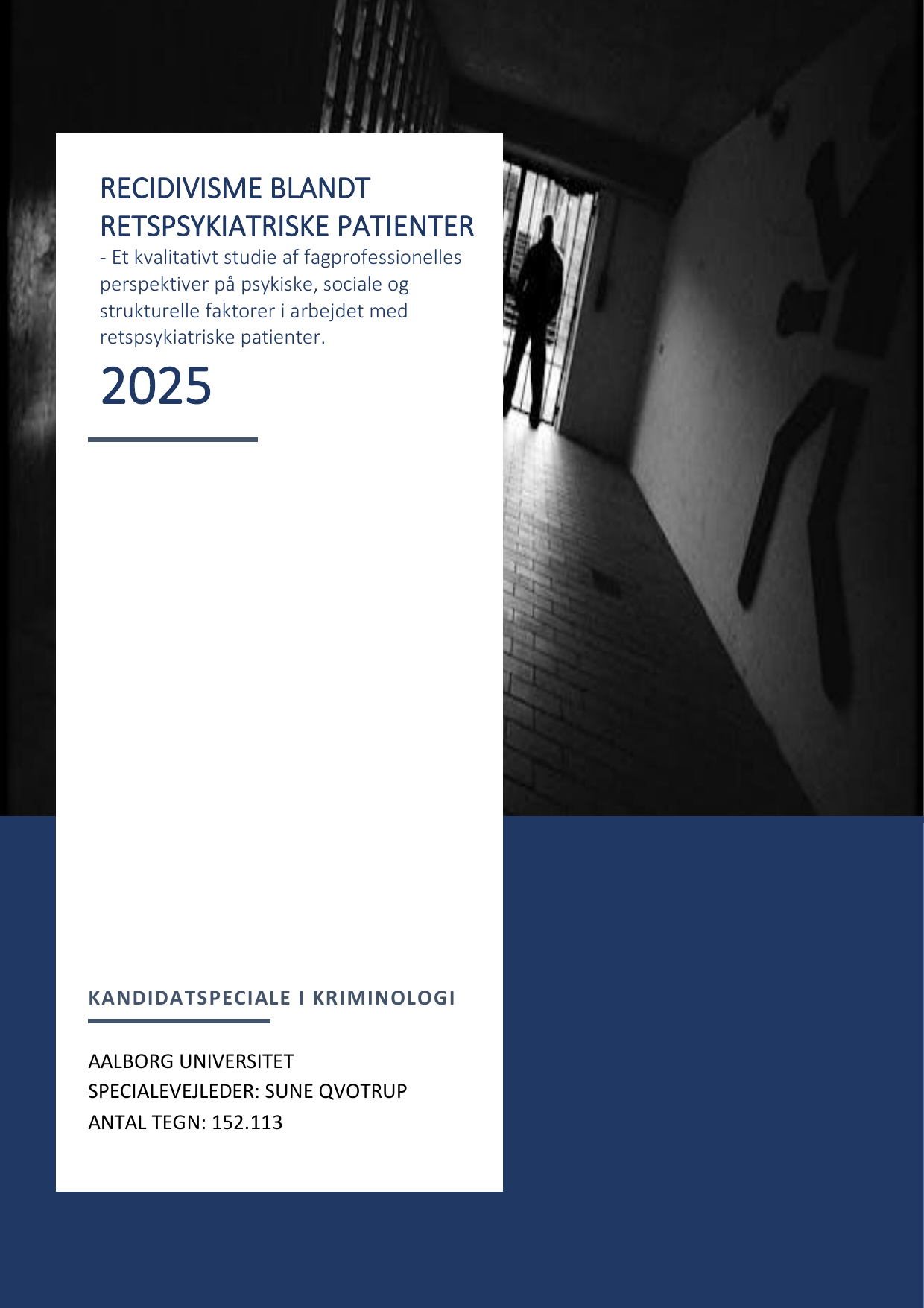
Recidivisme blandt retspsykiatriske patienter - Et kvalitativt studie af fagprofessionelles perspektiver på psykiske, sociale og strukturelle faktorer i arbejdet med retspsykiatriske patienter
Oversat titel
Recidivism Among Forensic Psychiatric Patients - A Qualitative Study of Mental Health Professionals' Perspectives on Psychological, Social, and Structural Factors.
Forfatter
Semester
4. semester
Uddannelse
Udgivelsesår
2025
Afleveret
2025-06-03
Antal sider
72
Abstract
ABSTRACT The purpose of the thesis is to investigate recidivism among forensic psychiatric patients, based on qualitative insights from professionals who collaborate with those patients, from the forensic psychiatrics and from a social psychiatric center. The focus will look deeper in the structural, individual, and psychiatric elements in the patients’ lives. The research design is based on 10 semi-structured qualitative interviews. Eight of these are with professionals – five from a forensic psychiatric facility in the Central Region of Jutland, Denmark, and three from a community psychiatric center in the same region. Additionally, two interviews with patients from the community psychiatric center are included. The empirical material is analyzed using Travis Hirschi’s ‘Social bond theory’ and John Laub & Robert Sampson’s ‘Life-course theory’. The analysis shows that recidivism among these patients occurs due to a combination of factors. One key issue is the transition from forensic psychiatric treatment to residential living. Other significant elements include substance abuse, weak social ties to the broader society, and unhealthy relationships outside the institution. Childhood experiences and attachment to parents or other key caregiver also play a crucial role, as early social learning has a lasting impact on behavior. The conclusion is that recidivism among forensic psychiatric patients cannot be explained by a single factor. Rather, it is the result of several interacting conditions that may influence individuals to reoffend after receiving a treatment sentence.
Emneord
